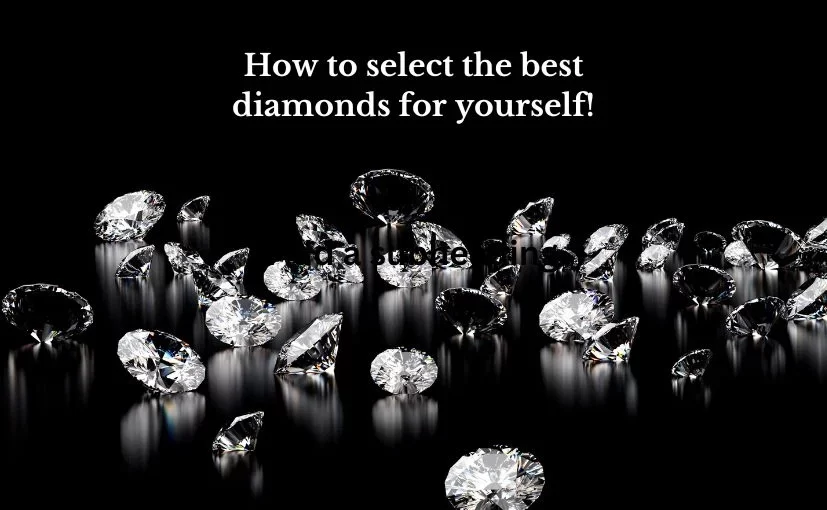Selecting the best diamonds is important for several reasons, primarily because diamonds are precious gemstones that hold significant value and symbolism. So selecting the best diamonds largely depends on certain factors. These factors are often referred to as the “Four Cs” of diamonds:-
Carat weight, Color, Clarity, and Cut.

Here’ a step-by-step guide on how to select the best diamond.
Carat Weight
Carat weight measures the size of the diamond. One carat is equivalent to 200 milligrams. Larger diamonds typically have a higher carat weight and are considered more valuable. However, it’s important to note that two diamonds with the same carat weight can appear different in size based on their cut and proportions.
Choose a carat weight that fits your budget and personal taste.
Color
Diamond color refers to the presence or absence of color in a diamond. The most valuable diamonds are those that are completely colorless, as they allow the most light to pass through, creating a beautiful play of colors. The Gemological Institute of America (GIA) grades diamond color on a scale from D (colorless) to Z (light yellow or brown), with D being the most desirable.
Look for diamonds in the colorless to near-colorless range (D to J) for the best value.

Clarity
Clarity assesses the presence of internal or external flaws, called inclusions and blemishes, respectively. Diamonds are graded from Flawless (no inclusions or blemishes visible under 10x magnification) to Included (inclusions and/or blemishes visible to the naked eye). A diamond with fewer flaws is more valuable.
Look for diamonds with a clarity grade of VS1 or VS2 for the best balance of quality and value
Cut
The cut of a diamond refers to how well it has been shaped, faceted, and polished. It is one of the most critical factors in determining a diamond’s beauty and brilliance. A well-cut diamond will reflect light effectively, resulting in a high level of sparkle and brilliance. The cut is graded on a scale from “Excellent” to “Poor.”
Look for diamonds with an Excellent or Ideal cut grade for the best light performance.
Set a Budget
Determine your budget for the diamond purchase. This will help you narrow down your options and avoid overspending.
Choose the Shape
Decide on the shape of the diamond you prefer. Common shapes include round, princess, emerald, cushion, and pear. This is a matter of personal preference.

Certification
Always ask for a diamond certificate from a reputable gemological laboratory, such as the Gemological Institute of America (GIA) or the International Gemological Institute (IGI). The certificate provides an objective assessment of the diamond’s quality and authenticity.
Ask Questions
Don’t hesitate to ask the jeweler questions about the diamond’s characteristics, such as its cut, color, clarity, and any unique features. A knowledgeable and trustworthy jeweler can provide valuable insights and help you make an informed decision.
Buy from a Reputable Source
purchasing diamonds from a reputable source ensures that you receive a high-quality, ethically sourced, and accurately graded diamond. It also provides you with transparency, confidence, and protection in your purchase, ultimately leading to a more satisfying and trustworthy buying experience.
Purchase your diamond from a reputable and established jeweler or dealer.
Understand Diamond Fluorescence
Some diamonds exhibit fluorescence, which means they may emit a soft, colored glow when exposed to ultraviolet (UV) light. In most cases, faint to medium fluorescence has little to no negative impact on a diamond’s appearance, and it can sometimes make it appear whiter in natural light. However, strong fluorescence might make a diamond appear hazy or cloudy, so it’s worth considering the fluorescence grade when evaluating a diamond.
Consider a Diamond Shape for Finger Size
The shape of the diamond can also affect how it looks on your finger. For example, elongated shapes like oval or marquise can make fingers appear longer, while round or square shapes can complement different finger shapes.
Inspect the Diamond in Different Lighting
Diamonds can look different under various lighting conditions. Ask to view the diamond in natural daylight, incandescent, and fluorescent lighting to assess its brilliance and color in different environments.





